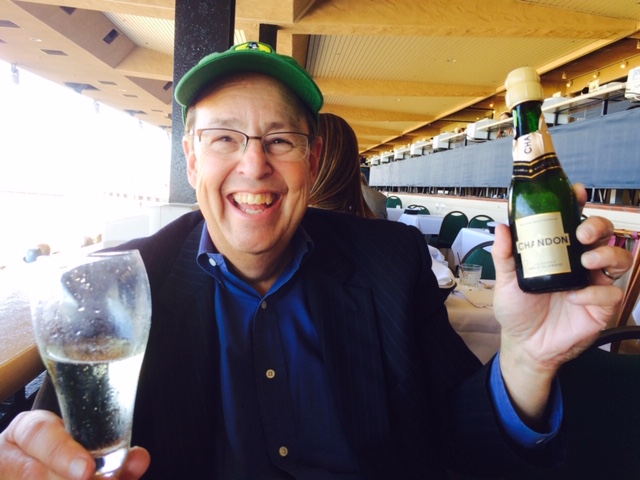The Last Black Man in San Francisco (Jimmie Fails, Jonathan Majors, Danny Glover) – Some films defy categorization. The Last Black Man in San Francisco qualifies. It’s lyrical, idealistic, breezy, amusing, surrealistic, and hopeful. It’s also sad, revealing, intense, and dreamlike.
At its heart, TLBMISF is a buddy pic set in the city by the Bay. Jimmie Fails plays Jimmie Fails, a young, intelligent black man living with his would-be playwright friend, Mont (Jonathan Majors), and Mont’s elderly, blind father (Danny Glover in what amounts to a cameo).
Like many great films, TLBMISF peels back the plot in layers. We’re well into the film before we understand why Jimmy and Mont travel regularly to a stately house on Golden Gate Street where Jimmie performs outdoor clean-up, painting, and other chores when no one else is around. Mont goes along, sketching the home and the people who enter his life while supposedly composing a play.
The house is within site of the Golden Gate Bridge in a well-kept neighborhood far from the hood where the guys live, a sidewalk preacher rants, and a quintet of brothers hang. In fact, the five guys appear rooted to their spot on the block across from where Jimmy and Mont wait for the bus to take them to Golden Gate. These guys are friends with Jimmy and Mont but not exactly. Jimmy and Mont are different because they have jobs, they have purpose, they have hope.
As the plot becomes clearer, we find out that Jimmy used to live in the house on Golden Gate with his parents. His grandfather, “the first black many in San Francisco,” built the house after returning from World War II, and Jimmy is committed to keep it pristine, perhaps hoping to one day move back in. The current occupants catch Jimmy in the act of sprucing up the place and just want him gone.
The plot turns when the current occupants are forced to leave the house in a prolonged family dispute. Jimmie moves in, becoming a squatter and doing all he can to ensure he gets to stay there. He fills the home with furniture that his aunt took with her when the family was forced to sell it years before. He dreams of spreading out on the couch and reading the paper while occupying a home he finds out is now worth in the vicinity of $5 million.
Before long, Jimmie has returned to the happiest time of his life; a time when his parents lived together, his father wasn’t a hustler and his mom wasn’t living down in East L.A. with a different guy. The memory of his grandfather singlehandedly building the best-looking house on Golden Gate gives Jimmie purpose and hope in a city that seems to have passed him, his friends, and his family by.
I’ll leave the storytelling here. I termed this film lyrical earlier, largely because it moves in a very lilting fashion to the inevitable crescendo when one of the owners returns, a real estate agent takes over the listing, and Mon finally finishes his play (called The Last Black Man in San Francisco) and presents it in the make-shift theater Jimmy builds in the house. Then comes the plot twist and the uncertain ending.
The film is totally unique. The characters are far from stereotypical and even seem out of place. The photography is a bit fantasy-like more than gritty. The camera angles are surprising and creative. The music is unexpected – not hip-hop and gritty yet not soulful and R&B. Everything about this movie feels ethereal.
Fails stars and co-wrote the autobiographical film with Director Joe Talbot, his longtime friend and collaborator. It won the 2019 Sundance Film Festival Directing Award as well as a Special Jury Prize for Creative Collaboration. The Last Black Man in San Francisco is one of those films everyone should see but one you may not love the way I did. It isn’t showing in a lot of theaters so you’ll have to look hard to find it.

